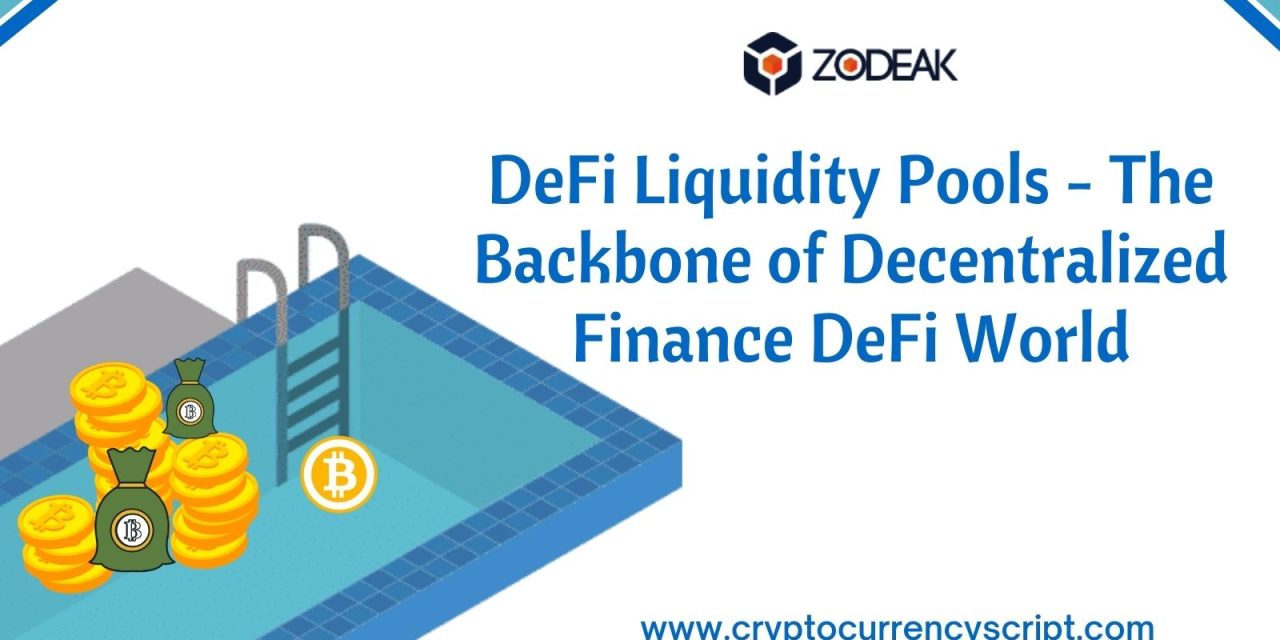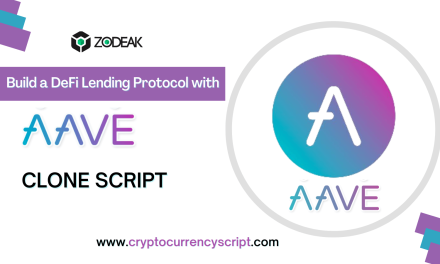In the DeFi ecosystem, Liquidity pools have become a popularised way of acquiring rewards that are enticing an increasing number of users. In this blog, we will discuss the Backbone of the Decentralized Finance DeFi – Liquidity pools, How does it works and its benefits, and much more.,
What are DeFi Liquidity Pools?
A liquidity pool is the collection of crypto assets or tokens locked in the Smart Contract. This is used to enable trading, lending, and many more functions in a decentralized manner.
This concept of Liquidity Pools became popularised in Decentralized Finance. After the launch of DeFi liquidity pools Uniswap, it became the Backbone of DeFi Decentralized Finance.
Through the conceptualization of DeFi Yield Farming or commonly known as liquidity providers, the crypto users store or stake their assets in these Liquidity pools to yield more assets or income.
The users or otherwise called Liquidity Providers (LP) add an equal value of two tokens in a pool to make a market. To provide their funds in the trading platform, they can earn trading fees that are proportional to their share of the total liquidity.
How do Liquidity pools work?
Like Liquidity Pools, Automated Market Maker (AMM) is one of the primary concepts in the DeFi sphere. This AMM plays a significant role that enables on-chain trading without any order book. There is no direct counterparty required to perform trades.
AMM is quite different in trading, compared to traditional trading. It acts as a peer-to-contract.
As we said above, Liquidity pools are a collection of funds or assets locked and deposited into the smart contract by liquidity providers. When the user executes a trade on an AMM, they need not have any counterparty. Instead of that, you execute the trade against the liquidity in the liquidity pools.
Of Course, Liquidity has come anywhere. So that anyone can become liquidity providers so they could be viewed as your counterparty in some insight.
Difference between Order books and Liquidity Pools
Before understanding why Liquidity pools are different, Let’s see a glimpse about Traditional Order books.
Order Book
An order book is the bunch of currently open orders for a given market in centralized trading. This system matches the orders with each other. This process of matching is called a Matching Engine. Along with this matching engine, the order book plays the heart of the Centralized Exchange (CEX). This system is splendid for streamlining efficient exchange and enables the creation of complex economic markets.
Liquidity Pools
At its core, the liquidity pool is a smart contract that controls the supply of both two tokens. Let’s assume the two tokens as USDC and ETH (biggest uniswap pools). This smart contract is termed an automated market maker (AMM). When the Liquidity providers include their token in the pool, the fundamental smart contract will return a “Liquidity pool token” illustrating their stake. They also receive a share of the fees yielded by traders who utilize the pool, which is proportionate to the value of their staked liquidity.
Benefits included in DeFi Liquidity pools
- Liquidity Providers easily can earn passive income
- It provides additional assurance for extensive investors
- It acts as Insurance for Token Holders
- It neglects liquidity risks in Decentralized Finance DeFi.
- Very Low Gas fees for every transaction
Earning on Liquidity Pools
As we mentioned above the Concept of Yield Farming or simply called Liquidity providers plays a crucial role to earn rewards. This Yield Farming is that users earn token rewards in Exchange for providing liquidity to Automated Market makers’ pools to stimulate token swaps.
A user’s yield from giving tokens to a liquidity pool differs immensely, relying on the protocol, the typical pool, the deposited coins, and overall market necessities.
Popularized Decentralized Finance Liquidity Pool
Here are the top Decentralized Finance DeFi Liquidity pools are available in the DeFi world, are,
- Uniswap
- Balancer
- Bancor
- Convexity
- OIN Finance
- KeeperDAO
- Kyber Network
- StarkDEX
Wrapping up
Liquidity pools are one of the primary features behind the current Decentralized Finance technology stack. Also, this is the backbone of the AMM feature and an essential earning tool for DeFi users. Want to integrate these features into your own DeFi platform? We Zodeak – the reputed DeFi Development Solutions provide impeccable solutions for you.
Contact us via,
Email: [email protected]
Whatsapp/Telegram: +91 9360780106







